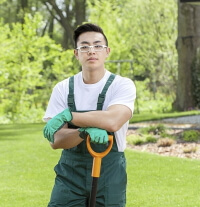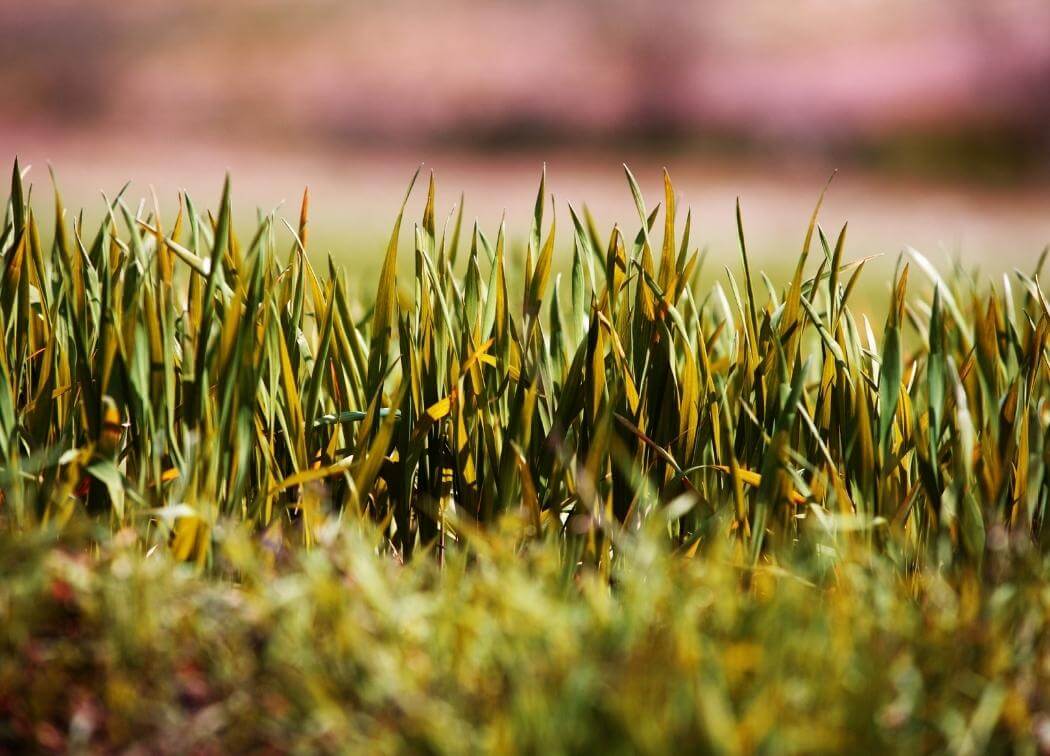The first thing we think of when our lawn has yellowing grass is lawn disease. While that can be true in some cases, improper lawn care can also cause your lawn to turn yellow.
Some reasons why your lawn is turning yellow include overfertilization, overwatering, dog urine, and frost burn.
We will be discussing these reasons in detail. Let’s dive right in!
Main Causes of Healthy Grass Turning Yellow
Regardless of what type of grass you have, they all run the risk of turning yellow, be it St. Augustine, Bermuda, Buffalo, Kentucky grass, or any other variety out there.
Overwatering
Believe it or not, too much water results in poor root development of your grass.
This is caused by a limited supply of oxygen in the soil, and the grass will take on shallow roots, leading to a deficiency of nutrients.
Not to mention that overwatering can also cause fungal diseases and reduced grass resistance, leading to reduced resistance.
Remember, if your grass is suffocated with water, this can cause thinning and discoloration of leaf blades.
Dryness
Too much water is bad for your lawn, but the same can be said for the opposite.
There are times in the year when the weather is REALLY hot, and our lawn is often exposed to the full sun the whole day. This heat stresses the lawn and causes damage.
Overfertilization
Too much fertilizer can burn a healthy lawn. Synthetic fertilizers, which contain excess nitrogen salts, can turn grass yellow. You might know this as leaf scorch.
Too much nitrogen can cause more harm than good to your lawn because it also produces chemical burns to grass roots.
Excess nitrogen can also alter the pH level of the soil.
You’ll know overfertilization is the reason for your grass turning yellow through these signs:
- Leaf-blades become yellow at the base
- Grass blades become brown at the top
- Grass grows slow
- Fertilizer crust on the soil’s surface
Lawn Diseases
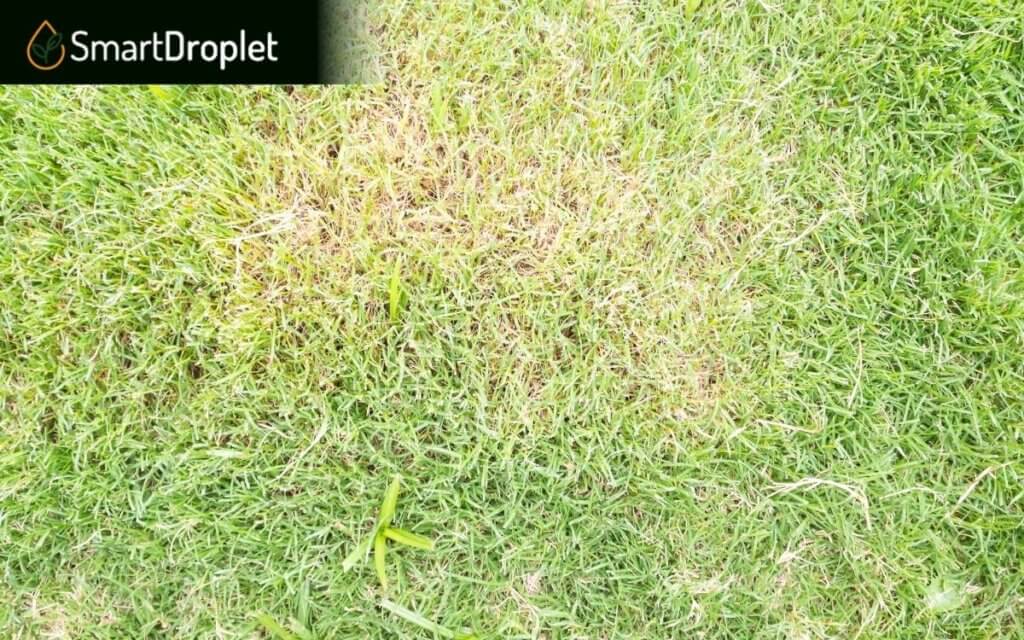
These diseases manifest as yellow grass, while some even have brown patches.
Some diseases include lawn fungus. Examples of this are fairy rings, snow mold, and dollar spot.
All of these lawn diseases cause yellow grass or undergrowth.
During winter, turf diseases could be in frost burn and excessive rain, which often cause yellowing leaf blades.
However, remember that the affected area may further become discolored if not treated properly.
Nutrient Deficiencies
Another reason why your green grass turns yellow is the lack of nutrients. Nitrogen deficiency is one of the most common reasons your lawn starts developing yellow grass.
Iron deficiency may also occur, which causes stunted grass blade growth and inconsistent, patchy turf.
If you think there are areas in your lawn where fertilizer is not applied, you will start to notice some discoloration on the tips of the grass, while the rest of the grass remains a deep green.
The University of Massachusetts Turf Extension says that improper fertilization can result in nutrient deficiency.
Brown streaks mean an overlap of fertilized grass, which is an issue of excess fertilizer in the concentrated center. On the other hand, yellow streaks mean these areas have been missed.
Pests
All over the country, chinch bugs are one of the top reasons for a lawn turning yellow. These thrive on excessive nitrogen, so make sure to aerate your lawn.
Dog Urine Spots
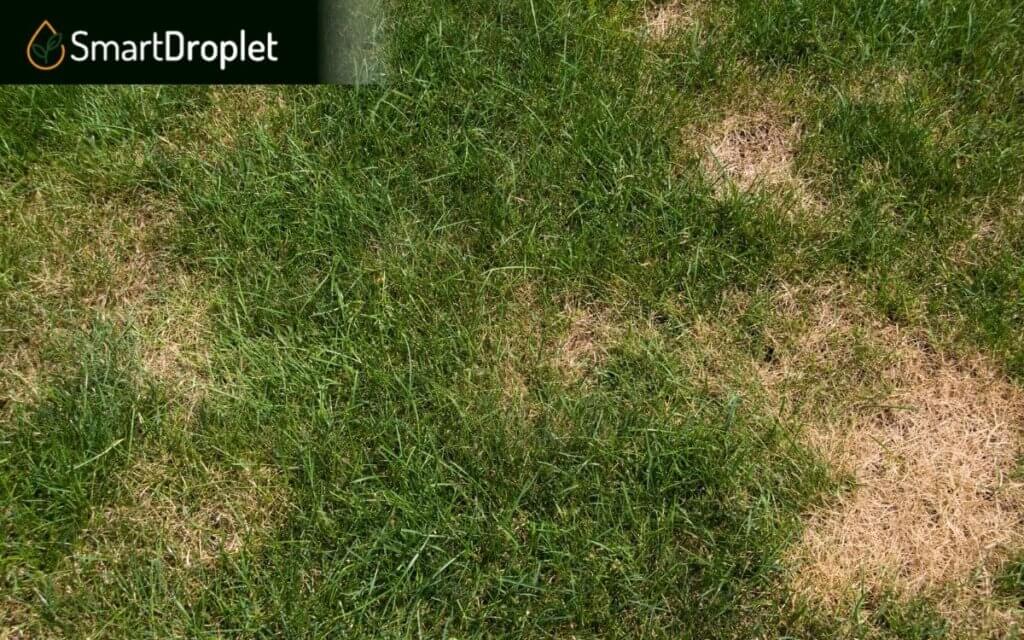
Did you know that dog urine contains high nitrogen compounds?
Nitrogen might suit your lawn, but it causes chemical burns and diluted edges where the nitrogen is adequate and concentrated areas where nitrogen is too much.
So, if you spot that your lawns have these yellow spots, or the grass shows signs of turning yellow, that might be animal urine.
Over Usage
Do you ever wonder why some lawns have this sign asking you not to step on the grass? That’s because too much walking can cause soil compaction.
It means that the pores in the soil close, which prevents water and other nutrients from reaching the grass roots, resulting in a yellow lawn.
Effective Methods to Turn Yellow Grass Green Again
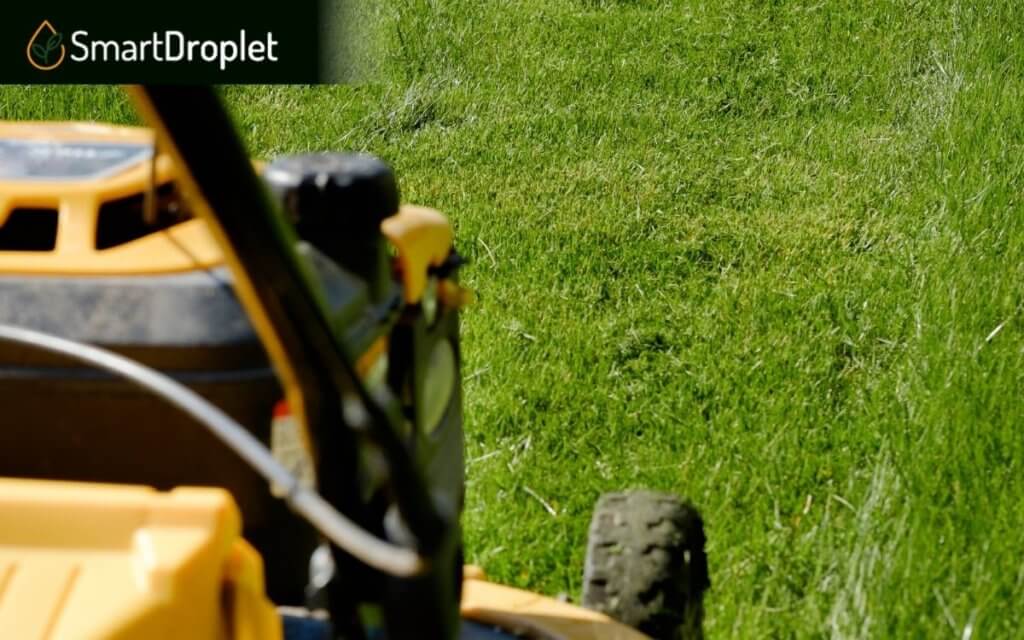
It takes A LOT of effort to keep a lawn green, and part of that is taking some action the moment yellow spots are spotted or when you think your lawn is becoming yellow.
Here are SURE ways to make your grass green again:
Reseed Urine Spots
There are times when the area affected by the urine does not grow again, especially when some time has passed before applying a dog urine neutralizer.
To prevent dead grass and a yellow lawn, you might consider applying a neutralizer right after your pet pees. If you can’t do that, it’s understandable because it might be time-consuming.
Yellow spots can also be solved by simply reseeding or re-sodding your lawn, especially if the damage is not reversible anymore.
Change Your Watering Routine
Too much water can also make your lawn yellow. That’s why we advise that you only water when you see that the two inches of the topsoil are dry.
Dry topsoil can happen more frequently during the hot weather, so consider watering more during this season.
Here are some other tips to make sure your grass can get an adequate amount of water:
- Study the maintenance program of the particular type of grass in your lawn. Every type requires a different kind of nourishment.
- The optimal frequency of watering most lawns is 2-3 times a week. If you follow this and still see yellow spots, consider reducing it to 1-2 times.
Fertilize When Necessary
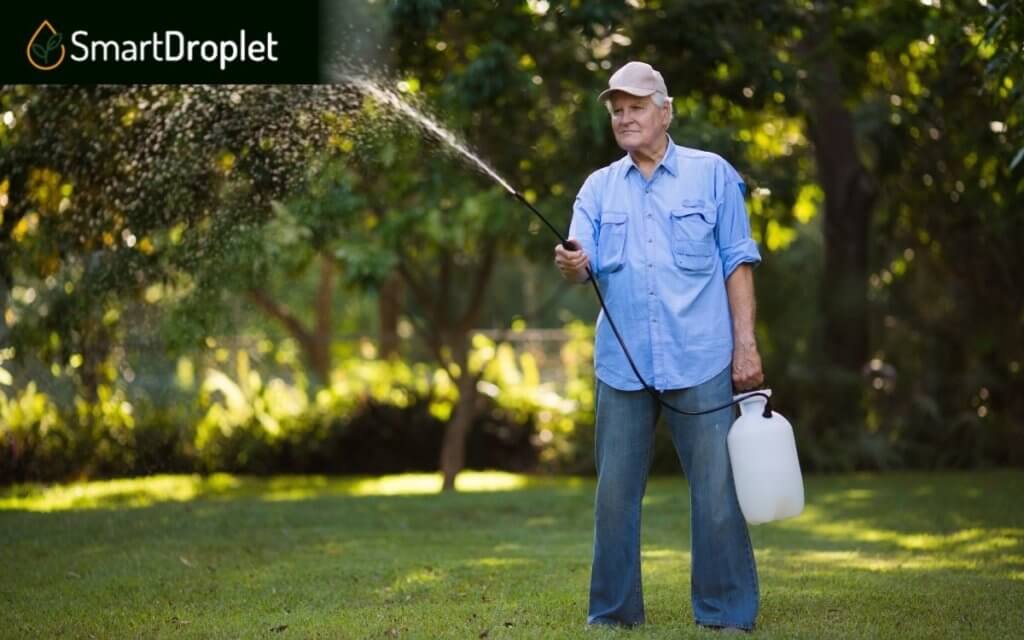
As much as fertilizer results in greener grass, overfertilized ones turn yellow. This is a cause of most lawn diseases.
One quick way to resolve this is by slowing down your fertilizer application. You may also opt to use a slow-release and organic fertilizer, ensuring that you will not burn your lawn.
Here are other tips when it comes to applying fertilizer:
- Conduct a soil test. This will let you know what nutrients your lawn needs, so you can consider that when you’re buying fertilizer.
- Follow the directions of the fertilizer. ALWAYS follow the instructions on the label to ensure that you’re doing it right.
- Give lawn food with the right amount of nutrients.
Cure Existing Diseases
Did you know that a fungal disease causes most lawn discoloration? That’s right, one of the stepping stones to ensuring a healthy lawn is to stock up on fungicide.
For your lawn to turn green after winter, ensure that you remove any fungus that may have grown during the season.
Use Sharper Blades When Mowing
Imagine this: it’s early summer, and there’s new grass growing, but they turn yellow after a while? Your mow blades might be the culprit.
The thing is, blunt blades leave the grass blades open, making them vulnerable to all kinds of diseases like yellowing.
The key to solving this problem is to ensure that you only use sharp mower blades by consistently sharpening them.
An alternative would be to use a reel mower over gas-powered mowers. The former ensures a cleaner cut than the latter and doesn’t leave blades open.
Inspect Your Lawn
If you ever suspect some insects to be the cause of your dilemma, make sure to do a thorough inspection.
Use a magnifying glass and check the blades if there are any larvae. If you find any, you can use an insecticide to properly reduce the number of pests and eventually remove them altogether.
Conclusion
And, there we have it! We hope you learned a thing or two about taking care of your lawn.
Remember, there may be more than one problem causing the yellowing of your lawn. What’s important is to determine these causes first and address them one-by-0ne.
Good luck!
Frequently Asked Questions (FAQs)
If you’re still unsure about everything we discussed, don’t worry! This section will discuss some of the most common questions regarding this particular topic.
Do I Need to Clean My Lawn Frequently?
We advise you to do so! Fallen leaves and excess grass clippings can trap the moisture underneath, giving your lawn no space to breathe.
Trapped moisture can become a breeding ground for diseases we do not want.
Another way to clean your lawn is to weed competitors. These competitors can take the nutrients intended for your grass and cause nutrient deficiency.
Can I Use an Irrigation System?
Of course! An automated way to water is good for your lawn, especially when you have different varieties planted.
In this way, you will ensure that your lawn is getting the right amount of water regardless of seasonal changes throughout the year.
Great irrigation also helps reduce pest population, so we would say this is some good lawn care!

